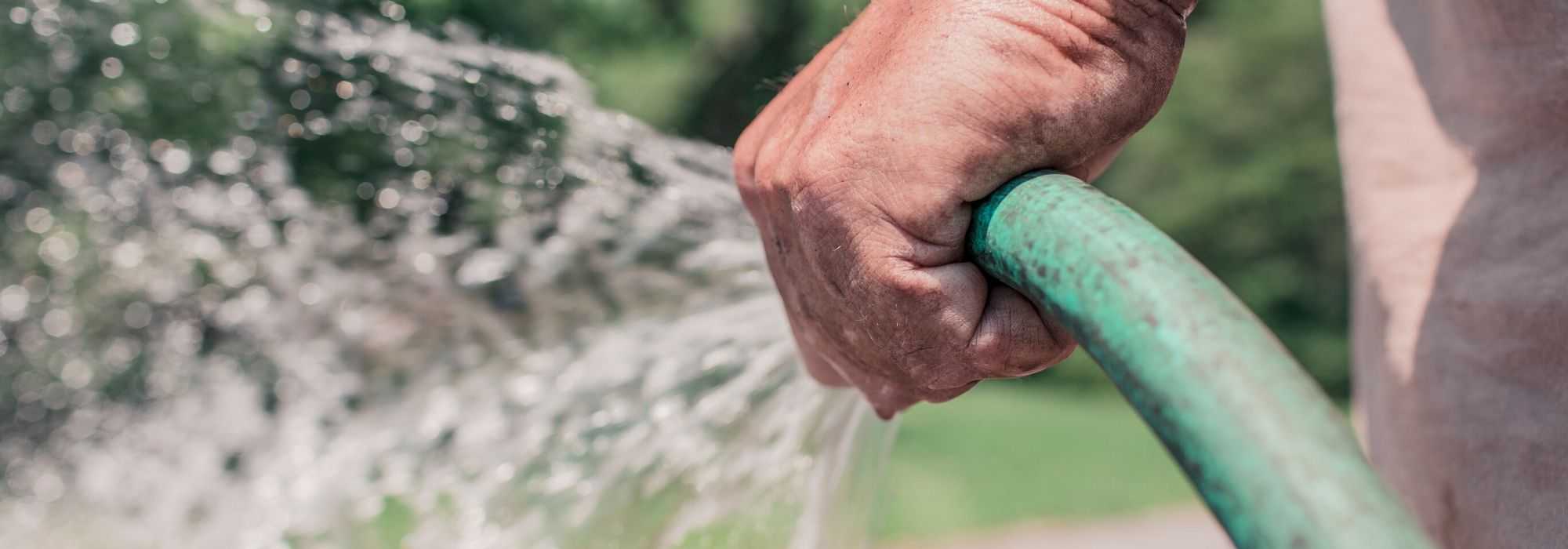
Watering the garden: how to do it?
Beginner's guide
Contents
When starting out in gardening, many questions often arise, including watering the garden or vegetable patch, a matter of vital importance. For yes, plants need water to live, develop properly and flower or fruit. But watering the garden is not just about pouring a little water over plants at random. Every garden is different, because of its soil, exposure and climate. The plants that inhabit it also have specific needs, and these vary with the seasons. So when and how should you water your garden? In what quantity? What water should you use? How can you conserve this fragile resource? To answer these questions, I offer this short guide for beginner gardeners, in which you will find all my tips and tricks to water plants in your garden properly.
The right watering for every garden
Not all gardens are watered in the same way. Indeed, several factors influence both watering duration and frequency. Have you checked these points before reaching for the watering can?
- Exposure is an important factor when discussing watering. In full sun, evaporation is greater and plants must face highest temperatures, including hottest times of day. While plants suffer less from heat in shade, know that many shade-loving plants appreciate soil that stays cool, and can quickly be in difficulty if water runs short. A wide variety of dry-shade perennials is however available to green difficult areas.
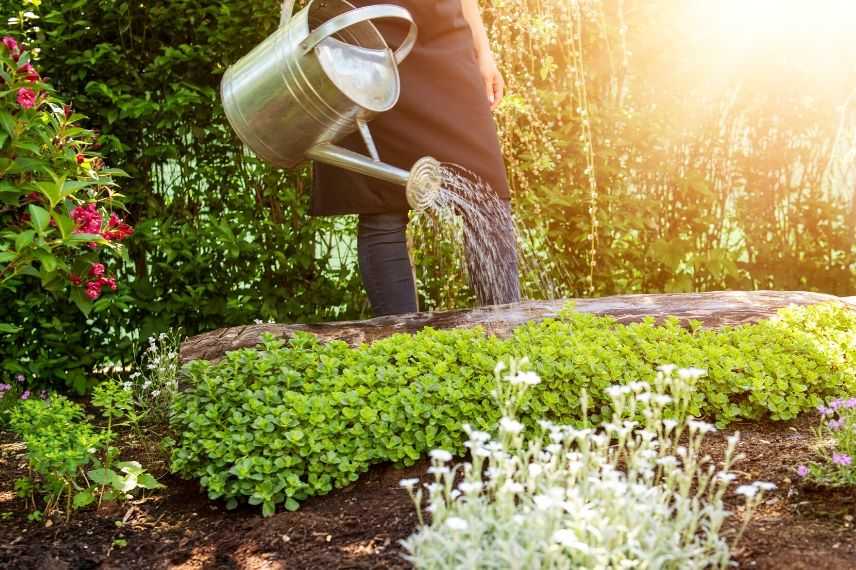
- Seasons and weather affect watering needs. It is obvious that in summer, these needs are greater, as this is often a period when rainfall is scarcer and warm winds dry foliage. Sometimes it is even necessary to help garden survive a drought. Bear in mind that a brief shower in mid-July is not enough to properly water your plants. Likewise, if rain is scarce in winter, or if a prolonged frost has prevented roots from accessing water, it is then good to water as soon as temperatures rise above freezing.
- Structure and nature of your soil are decisive when discussing watering. Heavy clay soil holds much more water (and nutrients) than very sandy soil. In the latter, water drains away and evaporates faster, making watering less effective.
- Potted plants suffer drought more quickly. Volume of soil in a container is limited and water evaporates even faster when pot is small and material is porous (terracotta, for example). This requires more frequent watering, up to twice a day for plants growing in full sun in a small container.
- Young plantings, as well as sowings, are fragile, because they have an insufficient root system to reach water. It is therefore imperative to water regularly and in appropriate amounts.
- Watering well also means asking what is the right amount of water to give each plant. Succulents and plants with thick leaves, such as Sempervivums or Sedums for example, are generally most resistant to drought. Mediterranean perennials and Mediterranean bushes are also known to be economical with water. In one of his articles, Olivier also presents a selection of perennials and grasses for a garden without watering (or almost!). Perennials with grey and silver foliage generally cope better with full sun. In any case, check specific needs of plants you already have or are planting in garden or on your terrace.
When and how to water the garden?
Water generously but rarely
Water generously but rarely! If you could remember only one tip, let it be this. Many gardeners think they are doing well by giving a little water to their plants every day to help them cope with successive hot days. By watering too often, you keep plants on a drip-feed. They develop a shallow root system and become unable to seek the precious liquid deeper in the soil. Moreover, evaporation is greater in the first centimetres of soil, which wastes water. Do not hesitate, for example, to give at least 10 litres of water per week to your young trees and bushes. Later, their deep roots will allow them to manage without extra water (except during heatwaves and exceptional droughts, of course).
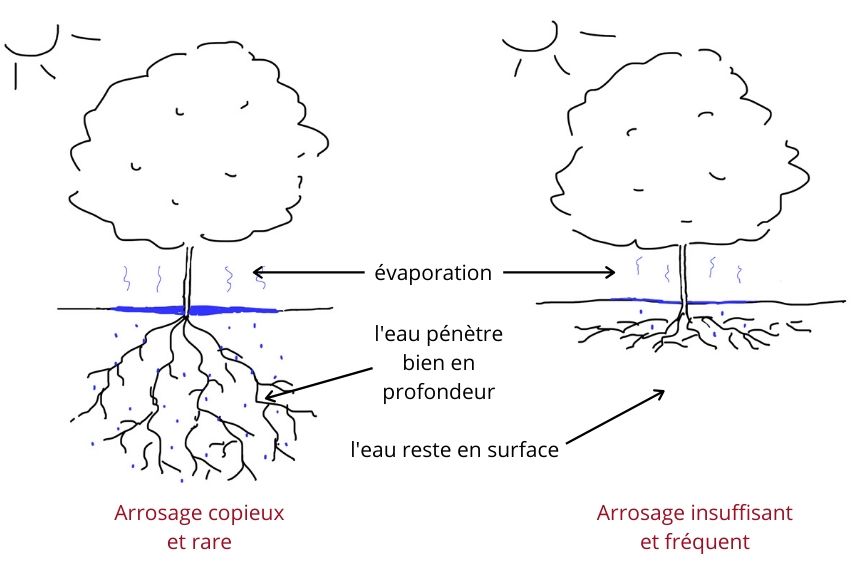
In winter, if rains have been scarce or the soil has remained frozen at depth for several days, take advantage of a thawing day to water moderately.
Some plants, when thirsty, curl up their leaves or let them hang to reduce evaporation. This can alert you to the need to water.
Should you water in the morning or in the evening?
Should a good watering be done early in the morning or late in the evening? In any case, you will have understood that it is irresponsible (and pointless!) to water in the middle of the day in summer. While this matters less in winter, high summer temperatures cause record evaporation, which wastes all the benefit of your effort. Otherwise, and depending on your availability, choose the very early hours of the morning, or the late afternoon and even evening. Water then has time to soak in deeply, and plants reap the benefit.
Discover Michael’s tips: Watering a garden during a heatwave!
Which watering method should you choose?
- A hose has the advantage of bringing water easily where you need it and targeting watering at the base of plants. A watering can is useful for parts of the garden a hose cannot reach, or if the area to water is small.
- For certain crops, using automatic watering can be very practical. But this technique is not without drawbacks. To learn more, see our feature on different automatic watering systems, their advantages and disadvantages, and our advice on installing automatic watering on balcony or terrace.
- Water as much as possible at the base, avoiding wetting foliage, to limit sun scorch and the risk of fungal diseases.
- If you need to be away, Stéphanie advises on the best way to cope with heat for potted plants while you are away.
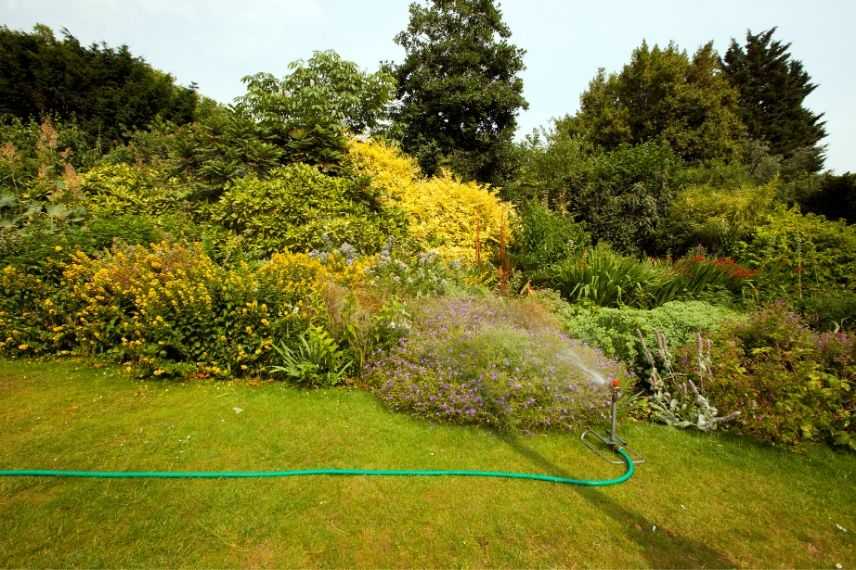
Which water should you use for watering?
Tap water is suitable in most cases. It has the advantage of being readily accessible and always available. However, it is often quite hard, treated (chlorinated, for example) and potable water is a resource to conserve!
Ideally, use rainwater collected via a tank or water butt connected to gutters. This non-calcareous water should be reserved primarily for ericaceous plants.
Find Olivier’s useful video tips on how to water the garden!
Tips and tricks for watering without waste
- ‘A hoeing is worth two waterings!‘. That’s a well-known saying among gardeners. Hoeing effectively breaks the surface crust of the soil, which favours water infiltration. Hoeing also gets rid of undesirable herbs, thereby reducing competition for that precious resource.
- Create a soil basin around the base of plants, to direct watering as close as possible to roots.
- Mulch your soil, ideally across entire bed surface or, if you lack material, around plants as a priority. Choose dried lawn clippings, shredded plant material, straw, dead leaves, or opt for ready-to-use mulches, which are very convenient to use. Spread several centimetres thick (between 5 and 10 cm) for good effectiveness.
- Accept seeing your lawn dry out or turn yellow in summer. At first autumn rains it greens up again without any problem. Short grass meadows composed of at least 50% fescue naturally resist drought and heat better. A good solution is to turn to plants that make a good alternative to short grass meadow, including groundcovers for all situations, or to consult various ideas to replace a grassed area.
- Care for planting. Dig a hole large enough, amend soil if necessary, soak pot for several minutes before placing it and water very generously. Do not forget to mulch.
- Choose low-water plants, which allow you to enjoy your garden without becoming slave to watering chores. To help with your choice, Olivier presents 10 best perennials for gardens without watering.
- For plants grown in pots, get into habit of placing a saucer under the container (for thirstier plants). It collects water and provides a small reserve. In winter, remove that saucer or turn it over before putting pot back. To know if a potted plant needs water, stick your finger into the substrate. If compost is dry, it is probably time to water. If your finger comes out moist (sometimes with a little compost clinging), there is no need to rush to the hose. For high-water-demand plants, using a water retainer such as Stockosorb helps optimise watering and space it out.
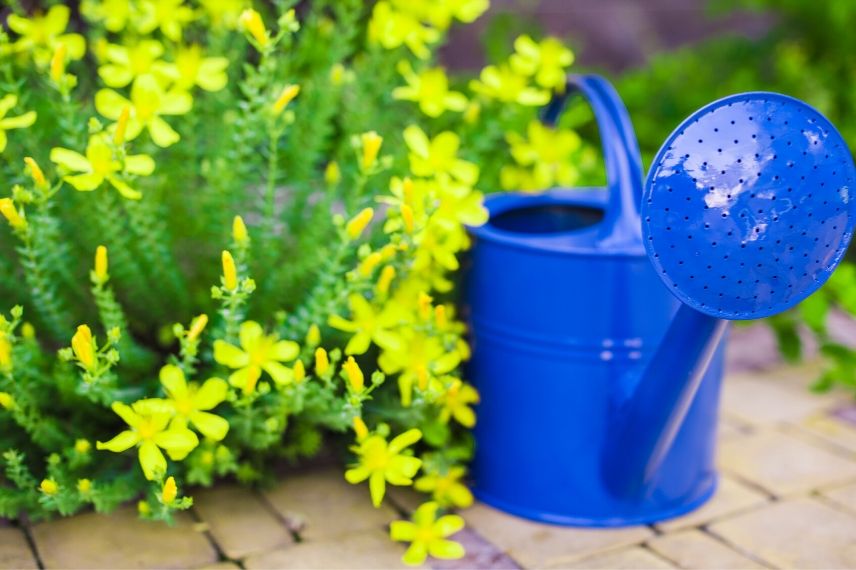
- Subscribe!
- Contents
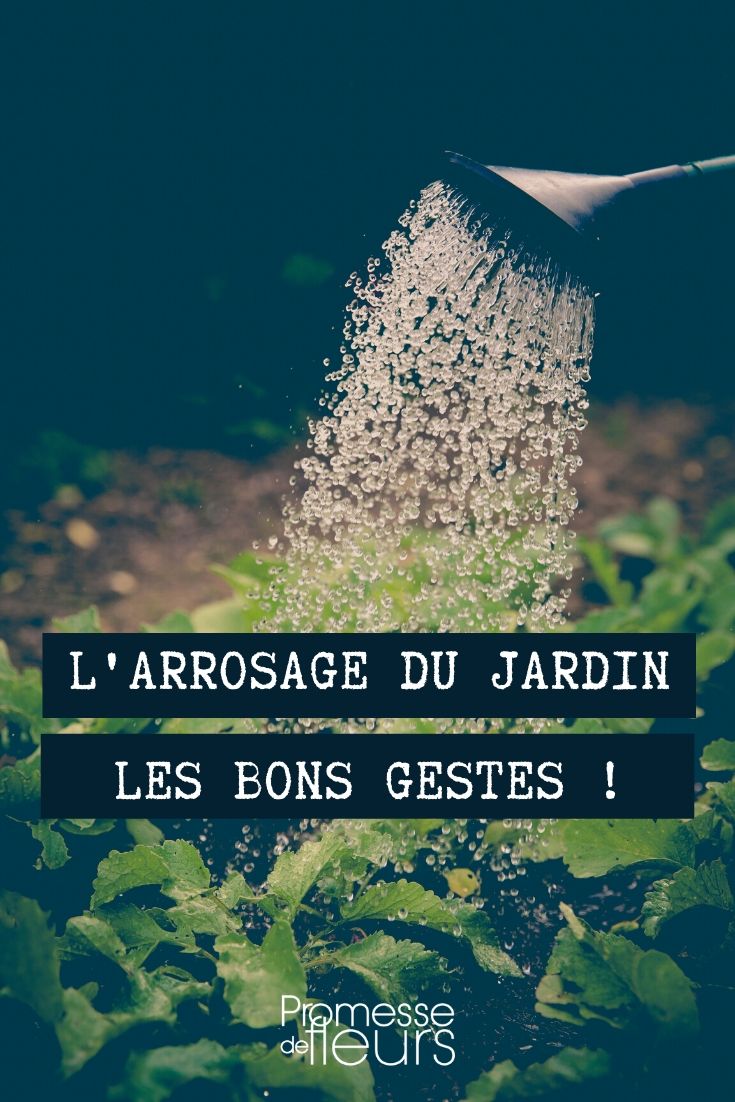































Comments